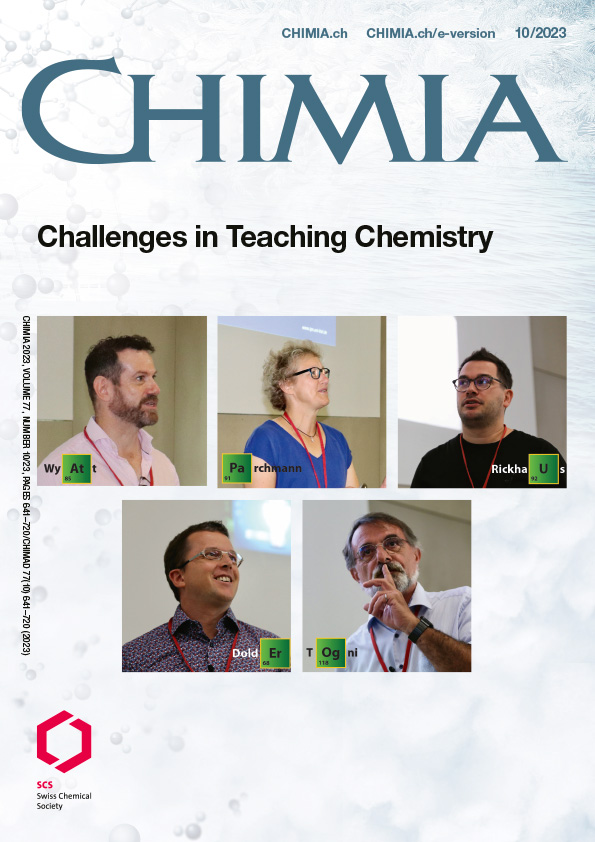Connecting Chemical Worlds – Context-based Learning Co-developed
DOI:
https://doi.org/10.2533/chimia.2023.668PMID:
38047862Keywords:
Chemical education, Context-based learning, RIASECNAbstract
Chemistry as well as chemistry education often raise two different perceptions among non-experts: Chemistry (education) provides spectacular phenomena, experiments and entertainment, but is also perceived as incorporating high levels of risk and many different facts and rules. Students and teachers get more authentic insights and perceptions of the broad spectrum of science tasks, activities and people when working together, whereas scientists can better understand teachers´ and students´ perspectives with regard to content interests and learning processes at school and beyond.
Funding data
Downloads
Published
How to Cite
Issue
Section
License
Copyright (c) 2023 Ilka Parchmann, Sandra Hansen, Paul Diemel, Timon Heyn, Antonia Grubert, Anna Vollersen

This work is licensed under a Creative Commons Attribution 4.0 International License.







